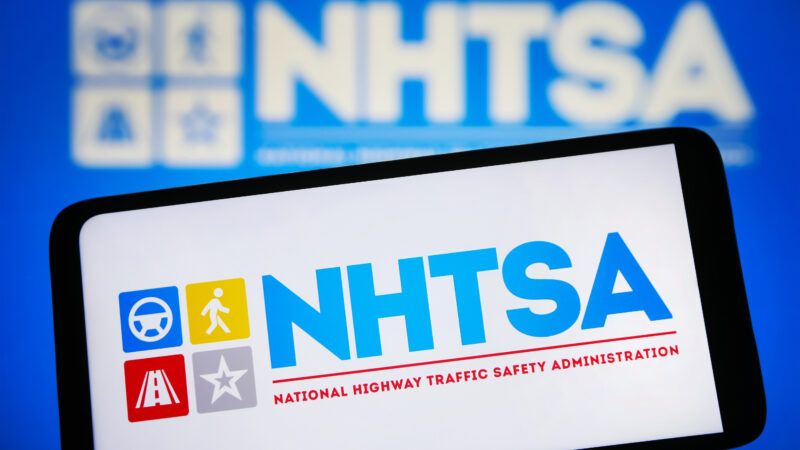The Feds Think They Can Save 67 Lives for the Low, Low Price of $48 Million
The National Highway Traffic Safety Administration declares a crisis and issues new regulations.

The National Highway Traffic Safety Administration (NHTSA) wants to regulate a crisis that doesn't exist—and it's going to cost tens of millions of dollars.
On Monday, the NHTSA proposed a new vehicle safety standard "to reduce fatalities and serious injuries among pedestrians struck by vehicles." If approved, the proposal will establish "new test procedures to stimulate a head-to-hood impact, along with performance requirements to minimize risk of head injury."
The proposal follows news that yearly pedestrian fatalities increased by 75 percent since a 2009 nadir, as reported by NPR. While the near-doubling of pedestrian deaths over 15 years certainly sounds alarming, do we really have a "crisis of roadway deaths" that's "even worse among vulnerable road users like pedestrians," as NHTSA Deputy Administrator Sophie Shulman claims? A cursory examination of the statistics suggests not.
In absolute terms, pedestrian traffic fatalities have increased 83 percent, from 4,109 in 2009 to 7,522 in 2022, the last year for which we have data. Per capita terms are more informative. With a population of 306.8 million in 2009 and 333.3 million in 2022, per capita pedestrian deaths increased by 77 percent, from approximately 13 to 23 per million. To put this into perspective, 46,653 Americans died from falls in 2022—nearly an order of magnitude greater than pedestrian fatalities.
Since the establishment of the NHTSA by the Highway Safety Act of 1970, pedestrian deaths have been virtually stagnant in absolute terms: 7,516 and 7,522 pedestrians died in 1975 and 2022, respectively. This translates to a steady per capita decrease in pedestrian deaths: 35 per million in 1975 and 23 per million in 2022. Although there's no crisis, thousands of pedestrian deaths are certainly a problem.
The NHTSA exists to "help reduce the number of deaths, injuries, and economic losses resulting from motor vehicle crashes on the nation's highways," according to the Federal Register. Per §201 subsection b paragraph 1 of the National Highway Safety Act of 1970, "the Secretary [of the NHTSA] shall carry out…highway safety programs, research, and development related to…highway-related aspects of pedestrian safety." By undertaking its proposed project, the NHTSA is squarely operating within its statutory authority.
NHTSA may be operating within its statutory authority, but it's doing so wastefully. How do we know? NHTSA kindly included a cost-benefit analysis in its notice of proposed rulemaking.
The NHTSA estimates that its proposal, if approved, would "mitigate approximately 67.4 fatalities annually." Not 67.4 hundred—just 67.4 lives. While the number of lives saved is small, the cost of the program is anything but, with "total annual costs rang[ing] from $48.94 to $60.43" million. Using discount rates of 3 and 7 percent, the NHTSA's regulation costs $1.1 million per life saved. There are cheaper ways to save a life.


Show Comments (33)